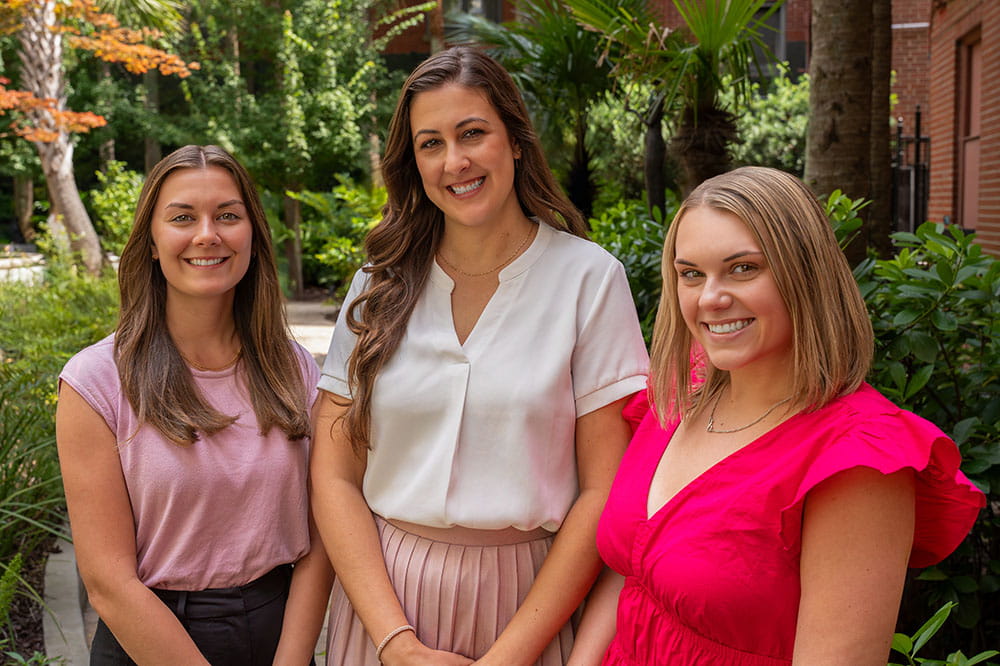Hollings expands Tobacco Treatment Program to Columbia – MUSC | Charleston, SC

Advancing Sustainable Development Goals through Specialized Tobacco Cessation Programs
Introduction: Program Expansion and Strategic Alignment with Global Health Targets
The MUSC Hollings Cancer Center has expanded its Tobacco Treatment Program to Columbia, South Carolina, marking a significant step in advancing public health objectives aligned with the United Nations Sustainable Development Goals (SDGs). This initiative, led by clinical pharmacy specialists, enhances the state’s capacity to combat non-communicable diseases by providing evidence-based support for tobacco cessation. The program’s growth from a single pharmacist in 2014 to a multi-site operation underscores a commitment to SDG 3 (Good Health and Well-being) and SDG 10 (Reduced Inequalities).
Contribution to SDG 3: Good Health and Well-being
Program Impact on Non-Communicable Diseases
The program directly addresses SDG Target 3.4, which aims to reduce premature mortality from non-communicable diseases through prevention and treatment. By focusing on tobacco use, the leading cause of preventable death in the U.S., the initiative mitigates a primary risk factor for cancer and other serious health conditions.
- The program provides evidence-based tools and comprehensive support to help patients overcome nicotine addiction.
- Specialists emphasize that tobacco use negatively impacts every organ system, making cessation critical for patients, particularly those undergoing cancer treatment.
- The program’s success contributes to improved treatment efficacy, faster healing, and better long-term health outcomes for patients.
Evidence-Based Treatment Methodology
A dual approach is central to the program’s methodology, tackling both the physical and behavioral aspects of addiction to ensure long-term success.
- Pharmacological Support: Nicotine replacement therapies, including patches, gums, and lozenges, are utilized to manage physical dependence and withdrawal symptoms.
- Behavioral Intervention: Certified specialists employ counseling strategies rooted in cognitive behavioral therapy and motivational interviewing to address the habits and triggers associated with tobacco use. This includes techniques like “urge surfing” and finding substitutes for the hand-to-mouth habit.
- Individualized Support: Treatment is tailored to each patient, celebrating incremental progress, such as reducing daily cigarette consumption, as a significant health victory.
Addressing SDG 10: Reduced Inequalities in Healthcare Access
Geographic Expansion and Telehealth Integration
The program’s expansion into the Midlands region and its robust telehealth infrastructure are critical to achieving SDG Target 10.2, which promotes the inclusion of all, irrespective of location. This strategy ensures more equitable access to specialized healthcare services.
- The new physical location in Columbia allows for in-person consultations for residents in the Midlands, enhancing patient engagement.
- Approximately 60% of consultations are conducted virtually, removing barriers related to transportation, distance, and health-related fatigue for patients in rural and remote communities.
- The hybrid model of in-person and telehealth appointments increases accessibility and adherence to treatment plans for a diverse patient population, including those from out of state.
Fostering SDG 17 and SDG 4: Partnerships and Professional Development
Interprofessional Collaboration for Comprehensive Care (SDG 17)
The program exemplifies the principles of SDG 17 (Partnerships for the Goals) through its multidisciplinary team model, which integrates diverse expertise for optimal patient care.
- The core team includes three clinical pharmacists and five certified tobacco treatment specialists.
- This team collaborates closely with a wider network of clinicians, researchers, counselors, and psychiatrists.
- This interprofessional approach ensures that patients receive holistic care, combining pharmacological expertise with behavioral and psychological support.
Commitment to Quality Education and Specialized Training (SDG 4)
In alignment with SDG 4 (Quality Education), the program invests in the continuous professional development of its staff to ensure the highest standard of care. Pharmacists complete intensive tobacco treatment specialist training, which enhances their skills in evidence-based behavioral therapies, pharmacotherapy, and relapse prevention. This commitment to specialized education builds a highly skilled workforce capable of addressing the complex challenges of nicotine addiction.
1. Which SDGs are addressed or connected to the issues highlighted in the article?
SDG 3: Good Health and Well-being
- The article’s central theme is the MUSC Hollings Cancer Center’s Tobacco Treatment Program, which directly aims to improve public health. It addresses the significant health risks associated with tobacco, described as the “leading cause of preventable death in the U.S.” By helping patients, particularly those with cancer, to quit smoking, the program contributes to promoting well-being and reducing mortality from non-communicable diseases.
SDG 17: Partnerships for the Goals
- The article highlights the collaborative nature of the Tobacco Treatment Program. It describes the team as a “multidisciplinary team” and an “interprofessional team that includes clinicians, researchers, counselors, psychiatrists and more.” This emphasis on collaboration among different experts to achieve a common health goal aligns with the principle of fostering partnerships to achieve sustainable development.
2. What specific targets under those SDGs can be identified based on the article’s content?
Targets under SDG 3: Good Health and Well-being
- Target 3.4: By 2030, reduce by one third premature mortality from non-communicable diseases through prevention and treatment and promote mental health and well-being.
- The article directly supports this target by focusing on a program designed to combat tobacco use, a primary driver of non-communicable diseases like cancer. The text states, “Tobacco use negatively impacts every organ system in the body, so helping people quit is critical no matter what health issue they’re facing – but especially cancer.” The program provides both prevention (stopping further harm) and treatment for tobacco addiction.
- Target 3.8: Achieve universal health coverage, including financial risk protection, access to quality essential health-care services…
- The program’s expansion into Columbia and its use of telehealth are direct efforts to increase access to specialized healthcare. The article notes the program’s mission is to “meet the needs of patients across South Carolina” and that telehealth “opens so many more doors to getting visits,” especially for those in “rural communities” or facing “transportation challenges.”
- Target 3.a: Strengthen the implementation of the World Health Organization Framework Convention on Tobacco Control in all countries, as appropriate.
- The article describes a comprehensive, evidence-based program for tobacco cessation, which is a core component of implementing the WHO Framework Convention on Tobacco Control. The program uses “evidence-based tools,” “pharmacotherapy, cognitive behavioral therapy, motivational interviewing and relapse prevention” to help people quit, directly aligning with the convention’s goals.
Target under SDG 17: Partnerships for the Goals
- Target 17.17: Encourage and promote effective public, public-private and civil society partnerships…
- The article showcases an effective internal partnership model within the healthcare system. The success of the program is attributed to its interprofessional team, where “pharmacists are an integral part of the multidisciplinary team.” The quote, “Each of us brings expertise to the table; it’s the best model for patient care,” exemplifies the spirit of this target by demonstrating how collaboration enhances service delivery and patient outcomes.
3. Are there any indicators mentioned or implied in the article that can be used to measure progress towards the identified targets?
Indicators for SDG 3 Targets
- Reduction in Tobacco Use: The article implies progress is measured not just by complete cessation but also by reduction. It states, “We don’t expect patients to quit overnight. One cigarette less a day still means 7,000 fewer chemicals in the body. We celebrate even that small win.” This suggests that the number of cigarettes reduced per day per patient is a key performance indicator.
- Increased Access to Services: The expansion of the program serves as an indicator of increased access. This is demonstrated by the establishment of a new site in Columbia and the growth of the team from “a single pharmacist in Charleston” to “three clinical pharmacists… in addition to five certified tobacco treatment specialists.”
- Utilization of Telehealth: The article provides a specific metric for telehealth use, stating, “About 40% of her visits are in person, with the rest conducted virtually.” This ratio can be used as an indicator to track access for remote and underserved populations.
- Implementation of Evidence-Based Practices: The program’s commitment to “evidence-based behavioral approaches” and the specialized training of its staff are indicators of the quality and effectiveness of the tobacco control measures being implemented.
Indicators for SDG 17 Target
- Composition of the Multidisciplinary Team: The diversity of the team is an indicator of a strong partnership. The article explicitly lists the members: “clinicians, researchers, counselors, psychiatrists and more,” in addition to the pharmacists who are central to the story. The number and range of specialties involved can measure the strength of the collaboration.
4. Summary Table: SDGs, Targets, and Indicators
| SDGs | Targets | Indicators |
|---|---|---|
| SDG 3: Good Health and Well-being | 3.4: Reduce premature mortality from non-communicable diseases. |
|
| SDG 3: Good Health and Well-being | 3.8: Achieve universal health coverage, including access to quality essential health-care services. |
|
| SDG 3: Good Health and Well-being | 3.a: Strengthen the implementation of the WHO Framework Convention on Tobacco Control. |
|
| SDG 17: Partnerships for the Goals | 17.17: Encourage and promote effective partnerships. |
|
Source: web.musc.edu
What is Your Reaction?
 Like
0
Like
0
 Dislike
0
Dislike
0
 Love
0
Love
0
 Funny
0
Funny
0
 Angry
0
Angry
0
 Sad
0
Sad
0
 Wow
0
Wow
0
















































:focal(1500,1000)/https://media.globalcitizen.org/a6/9a/a69a4720-d8a1-4715-b596-18738d03c05c/rotary_polio_hero_image.jpg?#)







/countries/sri-lanka/photo-credit---dmc-sri-lanka.tmb-1200v.jpg?sfvrsn=dc298bcc_1#)








![EMJ Microbiology & Infectious Diseases 6 [Supplement 4] 2025 – European Medical Journal](https://www.emjreviews.com/wp-content/uploads/2025/11/EMJ-EACS-Supplement-2025_Web.jpg?#)








